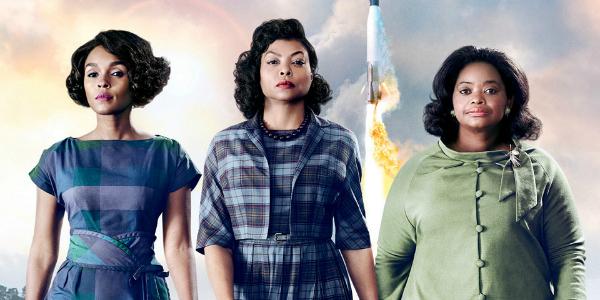“Hidden Figures” Unveiled

January 25, 2017
“I will have you know, I was the first negro female student at West Virginia university graduate school. On any given day, I analysed the binomial levels air displacement, friction and velocity. And compute over ten thousand calculations by cosine, square root and lately analytic geometry. By hand. There are twenty, bright, highly capable negro women in the west computing group, and we’re proud to be doing our part for the country. So yes, they let women do some things at NASA, Mr. Johnson. And it’s not because we wear skirts. It’s because we wear glasses. Have a good day.”
In the twenty-first century, the concept of a strong, independent woman has become acceptable, and even encouraged. In theory. In practice however, it is an entirely different story. Media still favors judging women on the basis of beauty rather than intellect or accomplishment. Films are largely male-dominated, with only sixteen-percent of protagonists being women .When a movie centers around a female, it usually follows that her goal is to find a man. In a time where it is challenging to find films that portray real women, Hidden Figures is truly a breath of fresh air.
The film is based on the true story of Mary Jackson, Dorothy Vaughan, and Katherine Johnson, three African-American females whose mathematical expertise played a crucial role in NASA’s successful launch of Alan Shepard, and later John Glenn.
In the midst of the space race against Soviet Russia during the 1960s, NASA’s demand for mathematicians skyrocketed (pun intended), and women were recruited to work as “computers.” Among these were a brilliant group of African-American women doubly underestimated, both for the color of their skin and the composition of their bodies.
Director Theodore Melfi adapted Margot Lee Shetterly’s novel into a film that maintained the authenticity of the time while weaving in contemporary elements. While the setting, costume design, and dialogue were true to the 60s era, the music, composed by Pharrell Williams and various artists, gave the impression of something one might hear on a current radio station (one that played decent songs). For younger audience members such as myself, the soundtrack connects viewers to a time period far before their own.
As for the portrayal of the characters, I have absolutely no complaint. Some, like Paul Stafford, played by Jim Parsons, and Vivian Michael, portrayed by Kirsten Dunst, made me clench my fists and internally scream- supporters of segregation and advocates of injustice, these characters were intolerable in the best way.
Kevin Costner as Al Harrison. This man needs no introduction. Simply wonderful.
Now for the stars of the film. Octavia Spencer was a powerhouse as usual; portraying Dorothy Vaughan, a natural leader who struggles throughout the film to earn her title as supervisor of the west computing group. Singer Janelle Monáe played a sassy Mary Jackson, who fought to become NASA’s first African-American engineer. Finally, Tarji P Henson put forth a silently strong persona in her portrayal of Katherine Johnson, who, at the age of ten, was already a high school freshman due to her superb mathematical abilities, and at NASA, calculated Alan Shepard’s trajectory, and was personally requested by John Glenn to recheck the calculations during his flight aboard the Friendship 7.
As author of Hidden Figures, Margot Shetterly states…
“These women were both ordinary and they were extraordinary.”